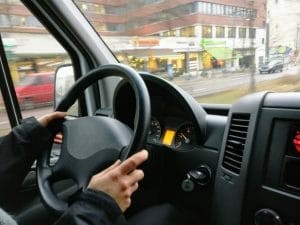Since 1995, the transponder key has revolutionized vehicle security, becoming standard in most cars manufactured after the 1990s. This sophisticated security measure prevents unauthorized vehicle operation, moving beyond simple key identification to immobilize your car without the correct electronic signal. If you’re driving a relatively modern car, chances are you’re using a transponder key system.
 Car key and transponder being programmed by a locksmith, highlighting automotive key programming services.
Car key and transponder being programmed by a locksmith, highlighting automotive key programming services.
The beauty of a transponder key lies in its ability to communicate with your car’s immobilizer. Without the unique signal from your programmed key, your car simply won’t start, acting as a powerful deterrent against theft. While this security is invaluable, it also means that getting a spare key or replacing a lost one requires more than just a simple key cutting. You’ll need to program the new transponder to work with your vehicle.
So, what happens when you need a new transponder key? Whether you’ve acquired a blank key or need to program a newly cut key, understanding the programming process is crucial. Let’s explore how you can program a transponder key, and when professional help might be necessary.
Before You Begin: Preparing to Program
Before diving into the programming process, there are essential steps to take. First, you’ll need to acquire a blank transponder key. It’s important to be cautious about purchasing pre-cut keys, as these can be difficult, if not impossible, to recut for your vehicle. For the best results and to avoid potential issues, consider purchasing your blank transponder key through a reputable automotive locksmith.
Used or secondhand keys are generally not recommended. These keys are often already programmed to a different vehicle and are typically very difficult to reset or reprogram for reuse. Investing in a new, blank transponder key is the most reliable approach.
Once you have your blank key, the next step is to have it cut to match your car’s ignition. This key cutting process requires precision, and it’s best entrusted to a skilled automotive locksmith. After your new key is cut, you can proceed with the transponder programming.
The DIY Programming Method: A Step-by-Step Guide
For certain vehicle models, programming a transponder key can be done at home with a relatively straightforward procedure. This method is often outlined in your car’s user manual. Here’s a general 3-step approach that works for some vehicles:
To attempt this DIY programming, you will need:
- A new, uncut, and unprogrammed transponder key that has now been cut.
- Your vehicle’s owner’s manual for specific instructions and confirmation if this method applies to your car.
- A bit of patience and time.
Step 1: Initial Ignition Cycle
Get into your car, ensuring your original, programmed transponder key is not with you or inside the vehicle to prevent any signal interference. Insert your new, cut, but unprogrammed transponder key into the ignition. Turn the key to the “On” position. Do not start the engine, simply turn it to the point where the car’s electronics are active. Leave the key in this “On” position for exactly 10 minutes and 30 seconds (ten and a half minutes). After this time, turn the ignition off.
Step 2: Repeat the Ignition Cycle
Repeat the exact process described in Step 1. Insert the same new key into the ignition, turn it to the “On” position, and leave it for another 10 minutes and 30 seconds. Then, turn the ignition off again.
Step 3: Final Ignition Cycle and Test
Perform the process one last time. Insert the new key, turn to “On” for 10 minutes and 30 seconds, and then turn off.
After completing these three cycles, the transponder key programming process should be complete for some vehicle models. Now, attempt to start your car using the newly programmed transponder key. If successful, you’ve successfully programmed your key!
When to Seek Professional Key Programming Services
While the DIY method can work for some vehicles, it’s not universally applicable. Car key programming can be more complex than simply cycling the ignition. Purchasing the correct blank transponder key can be tricky, and mistakes can lead to wasted money and further complications.
For a reliable and efficient solution, especially for newer or more sophisticated vehicle security systems, consulting a professional automotive locksmith is highly recommended. Locksmiths possess the specialized tools, diagnostic equipment, and expertise to accurately cut and program transponder keys for a wide range of vehicle makes and models.
Furthermore, professional locksmiths can handle situations where DIY programming is not possible, such as when:
- Your vehicle requires specific programming equipment or software.
- You’ve lost all your keys and need a new key programmed from scratch.
- You encounter issues or errors during the DIY programming process.
Choosing a qualified locksmith ensures the job is done correctly, saving you time, potential frustration, and ensuring your vehicle’s security system functions as intended. For dependable key programming services, especially if you are unsure about the DIY approach or need key cutting services, contacting a trusted automotive locksmith is your best course of action.